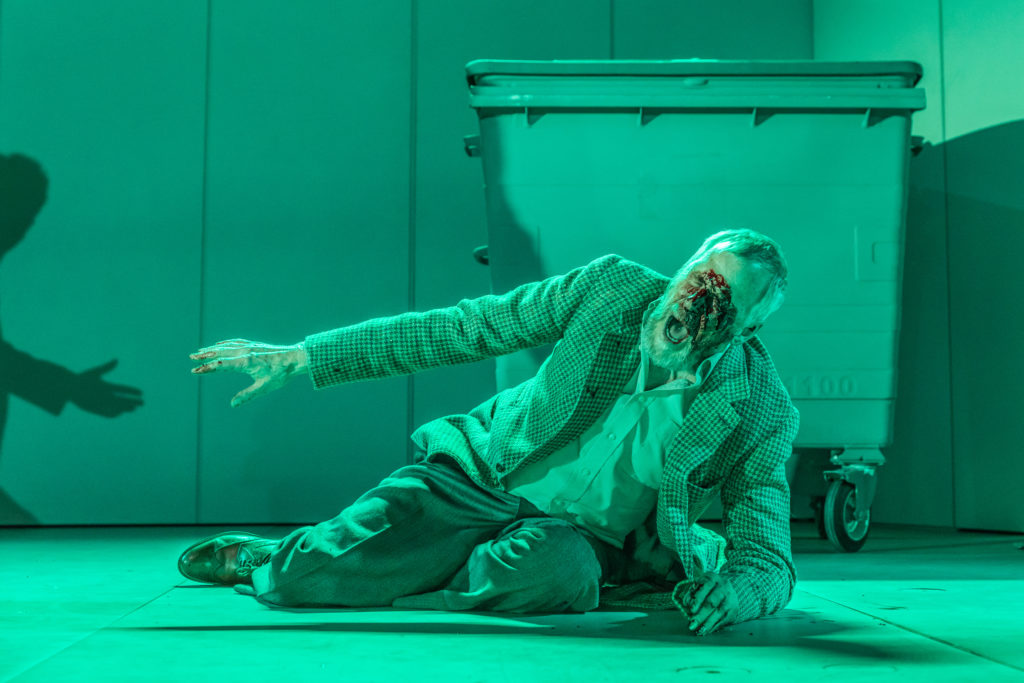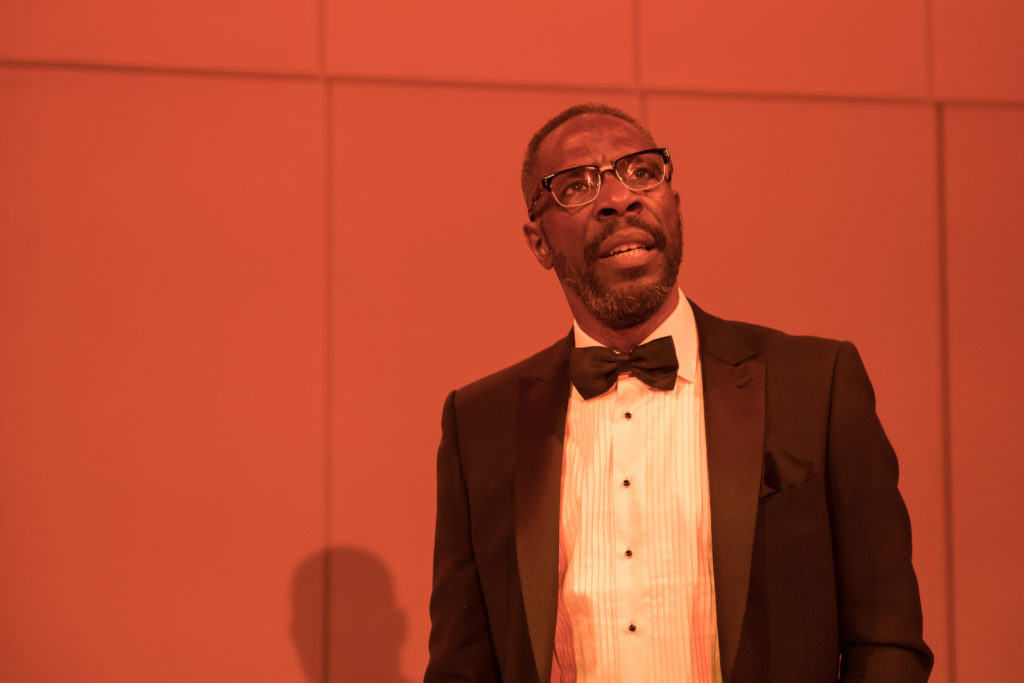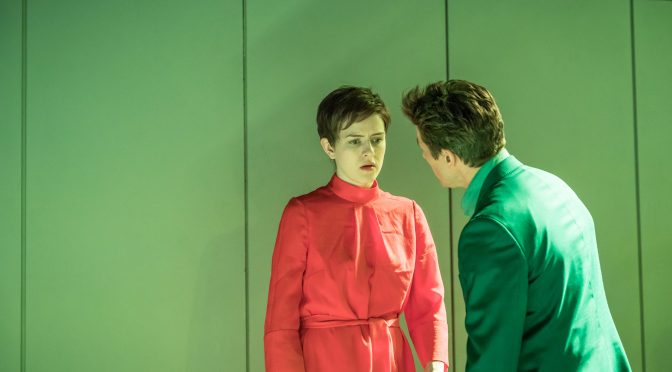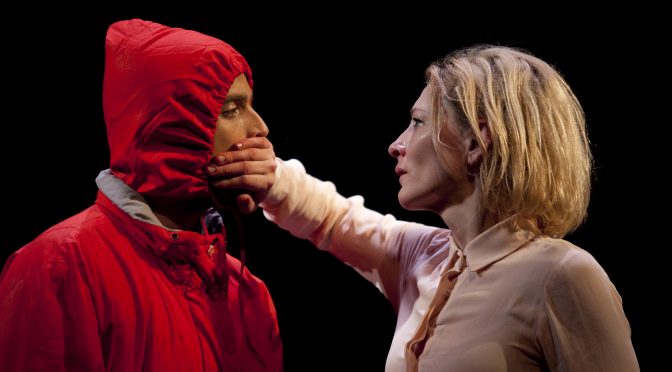Martin Crimp’s 1993 play is an exploration of truth and lies that uses art like a prism. The key question is who ‘owns’ a story – is it the teller or all of us? It’s a structuralist trope that gives rise to vivid characters who enliven the play’s opaque moments. And it’s a lot more fun than it sounds.
The piece pivots on husband and wife “facilitators” in the movie business, depicted skilfully by Julian Ovenden and Indira Varma. This gloriously devilish duo is working on the eponymous treatment that will become a film. Unbelievable, yet recognisable, the couple and their project turn out to be extremely funny.

Their treatment is of the ‘real life’ tragic story of an odd woman called Anne, recruiting a struggling writer (the excellent Ian Gelder) along the way. Aisling Loftus produces a figure disturbed and disturbing in Anne, using the role’s cipher-like qualities to advantage. Anne’s would-be amanuensis falls victim to the Shakespearean pretentions he tries to force upon her story (“vile jelly”, anyone?) in a shockingly grisly scene. How could the film being worked on relate to true events this strange? Combine the smart satire around the New York pseuds with Anne’s fragile mental health and art doesn’t stand a chance.

The film’s progress has a quasi-magical impact on real lives. Scenes of the movie’s planning are interspersed with Anne and her estranged husband (played by Matthew Needham), giving us an alternative view. Similarly, the high-profile actor/producer brought on board – a charismatic role for Gary Beadle – manipulates Anne’s story further. Meanwhile, his claim that “art changes everything” is debunked by the unsettling elision of truth and fiction.
Supernumeraries from the Almeida’s community programme provide a large cast that adds a well-used note of realism. Lyndsey Turner’s sure-footed direction, with Giles Cadle’s stark staging and Neil Austin’s lighting, combines naturalism with the bizarre and exaggerated superbly. A description of the moviemakers’ luxurious world as “allergic” to reality is typically solipsistic. Everyone involved, including the audience, is struggling to get to the bottom of motivations. But there’s fun to be had working out what’s going on – this is entertaining avant-garde.
Until 10 June 2017
Photos by Marc Brenner


